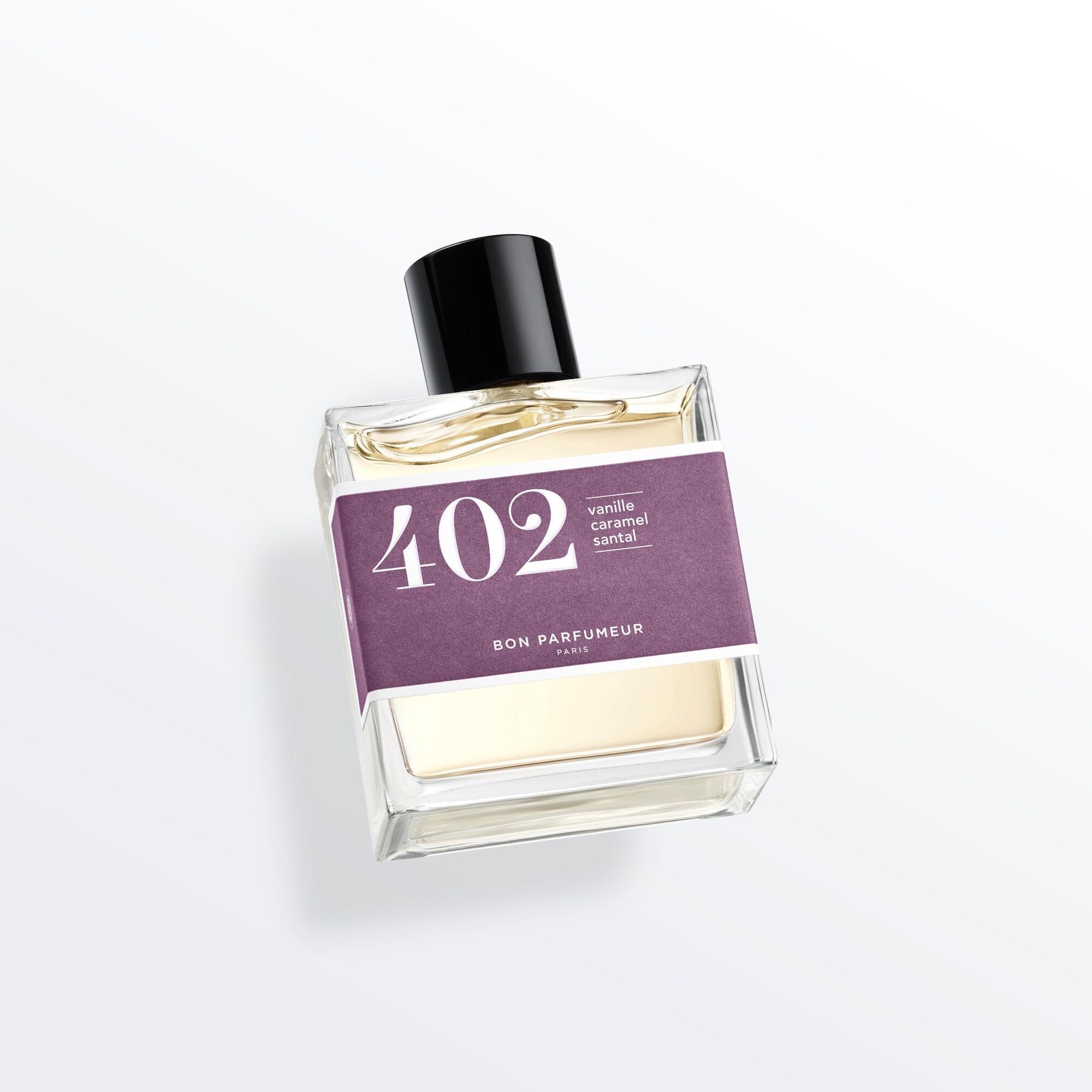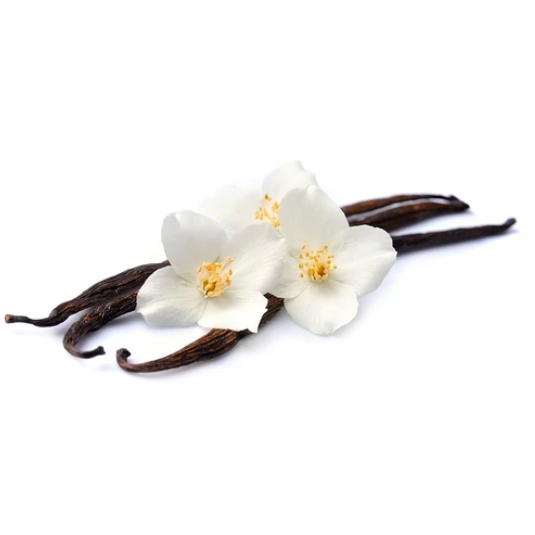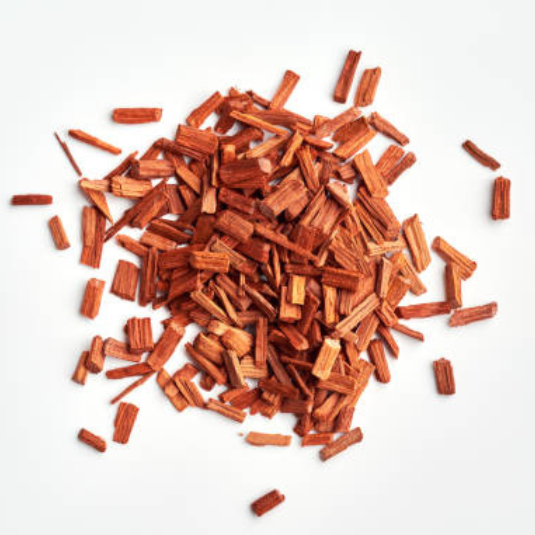Licorice Perfume
Discover licorice in perfumery, with our 501 eau de parfum! Praline, licorice, patchouli… the scent of our first childhood pleasures! A top announcing indulgence with a green and fresh hazelnut lifted by citrus. A praline and crunchy heart. At the heart, the iris balances the fragrance tempering the dessert aspect. A musk and licorice coulis at the base. Woody notes of patchouli.
In the beginning…
Licorice (Glycyrrhiza glabra) is a medicinal plant that has been used for thousands of years for its many virtues. Its history can be traced back to ancient cultures, notably Egypt and Greece, where it was already known for its soothing and restorative properties. During this era, licorice was already used to combat sore throats, digestive disorders, and liver issues.
Licorice root can be distinguished by its sweet flavors and has held a prominent place in confectionery since the Middle Ages.
During the 20th century, its gourmand, aniseed, and spicy scent attracted the attention of perfumers, who tried to incorporate it into their creations. Despite its presence in nature, licorice is not easy to extract. It is therefore reconstituted from natural and synthetic raw materials such as star anise essential oil, anethol, methylcyclopentenolone…
What do you know about licorice in perfumery?
Licorice is a limited natural resource and cannot meet the growing demand for this raw material in perfumery. Extracting licorice aroma from the plant is a rare and even non-existent process. We prefer to create accords or use anethol, a natural raw material with a strong aniseed scent, or star anise, with its spicy aniseed scent.
The synthesis of molecules that mimic the smell of licorice not only preserves this resource, but also produces a more consistent, controllable scent. Chemistry makes it possible to recreate the olfactory profile of licorice in perfume in a more sustainable and economical way.
Licorice has a unique olfactory profile, bringing together soft, sweet notes with a touch of spice and wood. It has a certain depth and complexity which sets it apart from other gourmand scents. If we compare it to notes like vanilla or caramel, we see that it combines woody, aromatic and spicy facets with gourmand facets.
Licorice belongs to the aniseed olfactory family. However, due to its woody, gourmand, aromatic and spicy facets, its classification is interchangeable, according to the perfumer and the chosen criteria. This versatility makes licorice a highly adaptable ingredient in the world of perfumery and one that can be combined with all kinds of raw materials within a perfume.
Licorice offers a multitude of possible olfactory notes. It can be combined with a wide range of ingredients from a variety of olfactory families: floral notes, coffee, or cocoa, for example, prolonging the gourmand, rounded character of the scent. Citrus notes, such as lemon or orange, can add a welcome freshness to the sweetness of the licorice in fragrances and perfume oil.
Licorice offers a multitude of possible olfactory notes. It can be combined with a wide range of ingredients from a variety of olfactory families: floral notes, coffee or cocoa for example, prolonging the gourmand, rounded character of the scent. Citrus notes, such as lemon or orange, can add a welcome freshness to the sweetness of licorice. Spices, such as aniseed or cloves, accentuate licorice's spicy, aromatic character. In addition, licorice blends well with woody notes such as cedar or sandalwood, lending sophistication and depth to the accord. At the base, licorice blends harmoniously with oriental notes such as amber, vanilla and musk, adding a warm, enveloping touch to the composition.
It is this singularity that makes licorice a choice of accord for perfumers. Used sparingly, it can bring a touch of originality and sophistication to a perfume composition.
Some licorice perfumes
Some eaux de parfum and eaux de toilette are built around a licorice accord:
• Eau de parfum Lolita Lempicka by Lolita Lempicka: It is one of the first perfumes to feature this accord, which brings the fragrance its unique character! The bold licorice combined with the violet offers a singular opening, very quickly enhanced by the heart of iris which brings a floral and powdery depth. The base is dominated by the sweet warmth of vanilla, providing a soft, lingering scent that blends perfectly with licorice and prolongs the latter’s gourmand character. Lolita Lempicka is often described as an enchanting, captivating fragrance.
• Black Opium Nuit Blanche by Yves Saint Laurent: Nuit Blanche is a modern interpretation of the eau de parfum Black Opium, with a gourmand, energetic twist. Coffee blended with orange blossom, two of the foundations of Black Opium are spiced up here with aniseed notes, giving them a licorice effect, while white flowers bring a refined sweetness to the fragrance.
• Réglisse Noire by 1000 Flowers: Réglisse Noire is a bold fragrance for both men and women which features licorice. Top notes of mint and lemon bring freshness, whilst aniseed adds a spicy, aromatic touch; this also serves to introduce the licorice. Licorice dominates the heart, but also is the fragrance’s main base note, offering a scent that is both light and fresh.
• Anisia Bella eau de toilette by Guerlain: Anisia Bella is a unisex perfume from Guerlain’s Aqua Allegoria collection, featuring licorice and aniseed. These two spicy notes are softened by the delicate floral notes and musky base notes. The result is a sophisticated, gentle perfume with a subtle depth that evolves over time on the skin.
• Brin de Réglisse eau de toilette by Hermès: Hermès offers Hermessence in its private collection. This unisex eau de toilette belongs to the aromatic amber olfactory family, combining licorice with a lavender heart. The result is a spicy, aromatic bouquet within a fragrance.

















